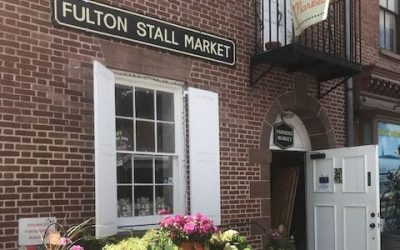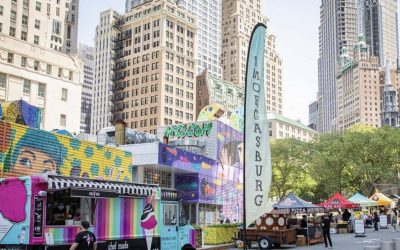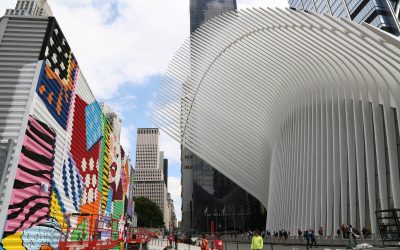This story originally appeared in Downtown Magazine’s Premier issue, Winter 2010.
Life As They Knew It
It may seem hard to think of Lower Manhattan as a neighborhood. The word “Downtown” conjures up images of glass and steel skyscrapers, power lunches and money markets. The area is often considered an enclave for bankers and lawyers, a bastion of power brokers in pinstripe suits who all but desert downtown after 5 p.m.
But while the recent residential boom in FiDi may seem like a new phenomenon, lower Manhattan has a long history as a residential neighborhood. In the 17th and 18th centuries, Downtown was literally the place to be. Up until the 1830s the city barely extended past Canal Street, and every New Yorker called Downtown home.
Throughout the 19th century the city grew, and Lower Manhattan evolved into the center of city government, as well as one of the world’s most important ports. As business boomed, many of the wealthy merchants and bankers who profited from the city’s bustling maritime industry moved out, building homes outside the city.
Local Flavor | In the Beginning
At the time the establishment of residential neighborhoods beyond the boundaries of the central city was a radical idea. It marked the advent of the “business district”—a place where people worked but did not live. However, even as New York’s nouveau riche sought uptown digs, Lower Manhattan was still home to several thriving immigrant neighborhoods.
By 1900 more than 7,000 Chinese immigrants had settled below Canal Street around Pell, Doyers and Mott Streets. On the western shore of the island, Washington Street was known as Little Syria, and the area around West Street was home to New York’s Greek quarter. In the early decades of the 20th century, Downtown continued to develop, evolving from one of the world’s most import ports into the center of the world’s financial industry.
While South Street’s busy piers and wharves once symbolized the power of New York’s renowned port, skyscrapers that housed banks and brokerage houses slowly supplanted tall-masted merchant ships. The development of downtown Manhattan is captured in the photos seen here, taken by Berenice Abbott in the 1930s as part of a project entitled “Changing New York.”
With funding provided by the Federal Arts Project, Abbott set out to document the city’s rapidly evolving environment. The photos in this series reveal a city full of contradictions. At the height of the Depression, the Downtown skyscrapers still reflect the power and wealth of New York’s financial industry.
Seen from afar the skyline is symbolic of the modern city, yet when Abbott took these photos the city’s streets were still plied by horse-drawn carts delivering milk door to door. In the postwar era Downtown found itself in competition with Midtown for the title of New York’s preeminent business district.
Urban renewal efforts spearheaded by David Rockefeller sought to revitalize Lower Manhattan with bold commercial and residential projects. In 1960 Rockefeller revived postwar plans for a World Trade Center in Lower Manhattan, and when construction began six years later, dirt excavated from the site was used to add a 700-foot extension into the Hudson that would become Battery Park City.
Years later Battery Park City would be credited with sparking a sort of residential renaissance in downtown Manhattan. When it was first proposed in 1966, the west side of Lower Manhattan had devolved from a dynamic port into a sea of decaying piers. Upon its completion in the 1980s this 92-acre development brought nearly 8,000 new residents to downtown Manhattan.
By the mid-‘90s zoning changes and tax incentives combined to lure residential developers to the area. Conversion of commercial office space into residential buildings became increasingly common, and supermarkets, bars and restaurants soon followed as Downtown’s residential population swelled.
Most recently FiDi has witnessed a new phenomenon—an upsurge in the number of families choosing to settle in Lower Manhattan, thanks in part to an abundance of larger and more affordable apartments. While previous residents tended to be single professionals who wanted to live close to their Wall Street jobs, Downtown’s newest residents are somewhat different. Like many other New Yorkers who have called Downtown home, they are reinforcing a sense of community in a neighborhood with a rich historic past.
Photos by Berenice Abbott/Museum of the City of New York
















